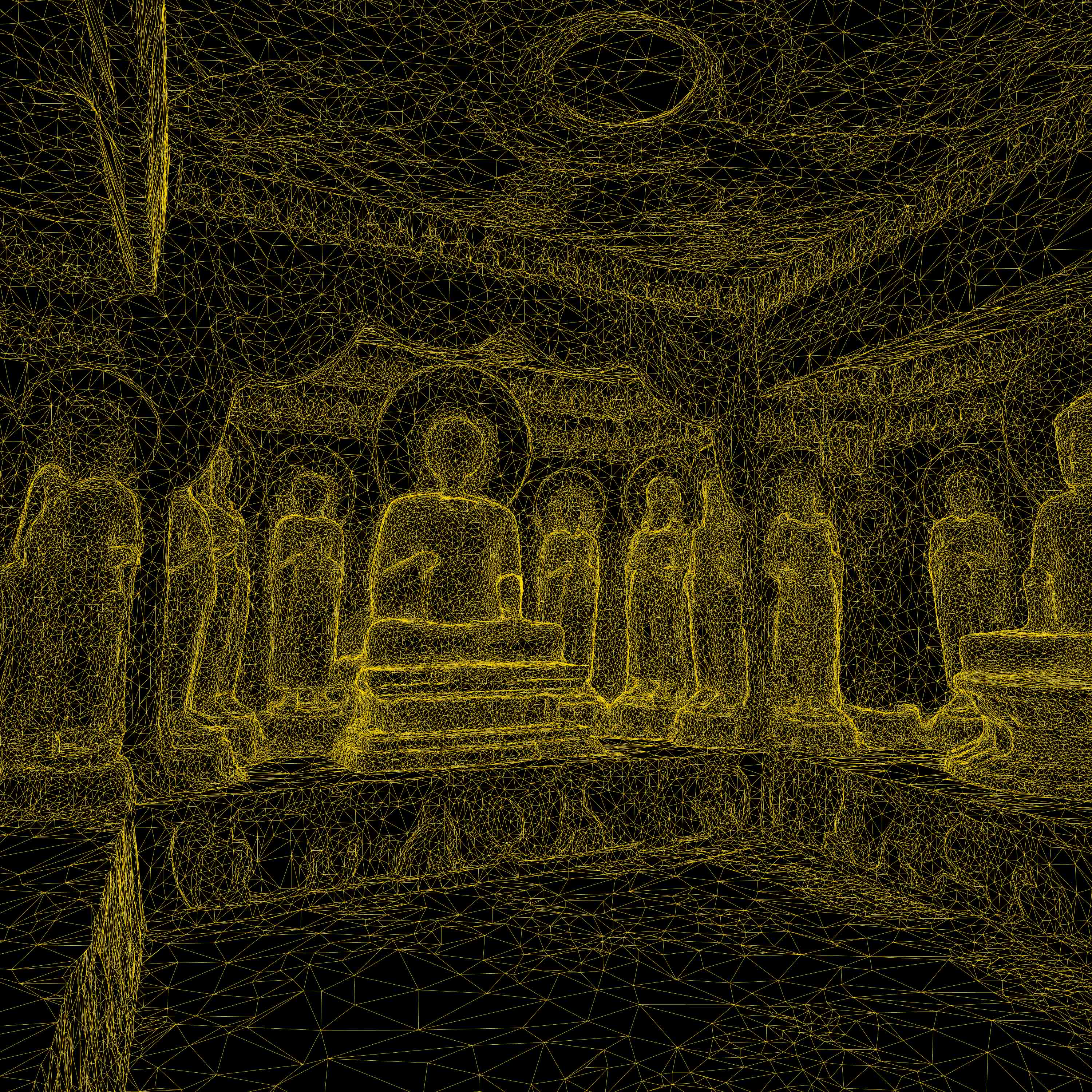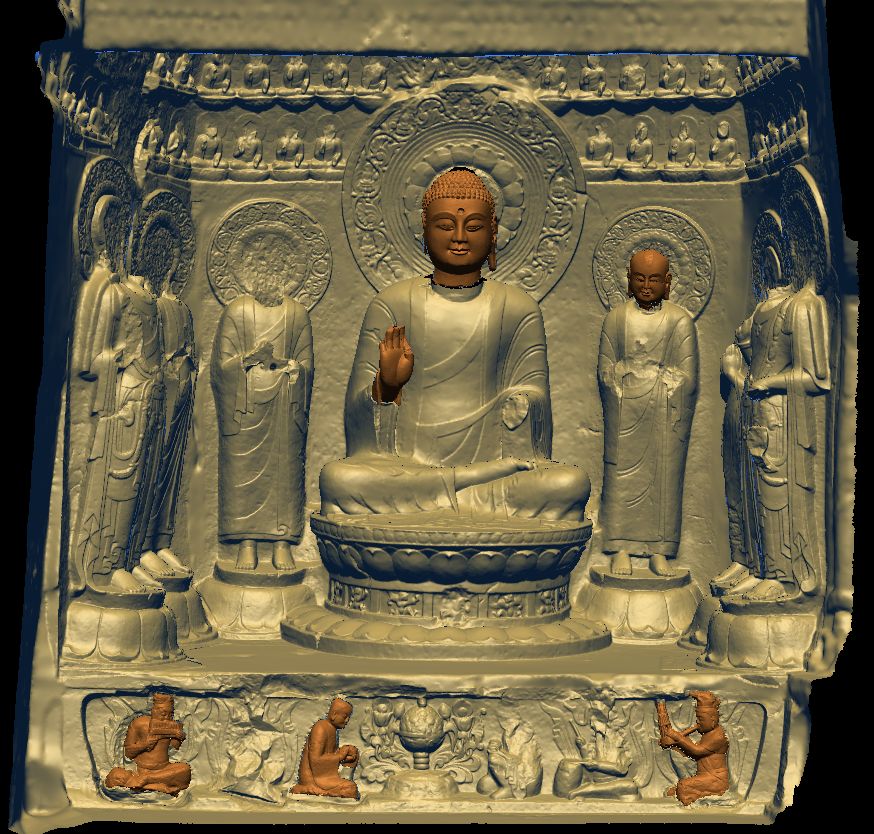Technology
Capturing 3D data with Konica-Minolta Vivid 9i laser scanner.
A major initiative of the Xiangtangshan Caves project was the use of new technology for recording and archiving the sculptures attributed to the Xiangtangshan Cave complex. The project work team assembled by the Center for the Art of East Asia scanned the sculptures and created 3D models of the individual sculptures and also took high-resolution digital photos of the sculptures and caves from different perspectives. A team in China carried out scanning at the Xiangtangshan caves in collaboration with our Center. Using the acquired 3D data, we were able to implement accurate matching of the dispersed sculptures with their original cave locations.
The project website presents the resulting 3D model data and the 2D high-resolution photo data. A few of the sculptures have the photos texture-mapped on the surface of the 3D models. The ‘Echoes of the Past’ exhibition used the 3D sculptures and cave data to create synthesized digital video installations including interactive 3D models and a digitally reconstructed cave.
In the early twentieth century, publication of photographs of cultural sites in China awakened international interest in Chinese monuments such as Buddhist temples and caves sites stimulating interest among collectors and art dealers in the West, Japan, and China. Beginning around 1910, before they were first photographed in situ, many sculptures were removed from the Xiangtangshan caves and entered the art market, causing extensive damage. Because of this, attributions of sculptures in collections outside China to the caves have been speculative and sometimes inaccurate. Theoretical reconstruction of the caves began through comparing photographs of the caves with photographs of objects from museums around the globe. Digital 3D imaging using the data gathered by the project has enabled more precise matching of many sculptures with possible location sites in the caves.
Video of North Site South Cave synthesized from 3D data with color texture.
Video of Buddha Hand SFA.B69.S37 3D model with manually added texture.
3D Scanning and Digital Model Creation
The effort to capture information for digital 3D models took place from 2005 to 2007. A team from the University of Chicago used a Konica-Minolta Vivid 9i, a nondestructive, eye-safe, Class 1, laser-triangulation scanner, to scan over eighty objects at twenty-two different locations around the world.
Creating digital 3D models of objects consists of capturing the surface of an object as a dense three-dimensional ‘point cloud’ with many detailed scans, sometimes hundreds, of single object. The sectional scans were manually registered and aligned using sophisticated software to stitch and merge them into the final tessellated 3D model. The equipment used on the sculptures during the project did not have the capability to capture surface color data as effectively as the more advanced equipment and software today. More recent 3D scanning technology allows automatic surface registration and alignment, as well as simultaneous capture of surface texture color.
As part of the collaborative effort, a team assembled by Peking University conducted the 3D scanning of the Northern Site North and South caves in June - July 2008 using two scanners: a lower accuracy time-of-flight 3D laser scanner to capture larger areas such as facades and large cave interiors and a separate structured-light 3D scanner for scanning of specific areas and details of interest.
The Peking University team scans in the North Site South Cave.
Wireframe image of the tessellated 3D digital model of the altars of the North Site South Cave.

Website Technology
The project website has been updated with technological improvements and better overall design. The current website, released in the Spring of 2014, is built on the Drupal framework. The interactive 3D model viewing is implemented using software from CCRM Labs LLC. During model manipulation, the software renders a low resolution data set using the browser’s WebGL functionality. When model manipulation is not taking place, a high-resolution rendering of the model is displayed from the server side. The high-resolution sculpture photographs are displayed in Zoomify software though a sophisticated tiling system to effectively display close details of the sculpture photos.
Digital Cave and Sculpture Reconstruction
Using the 3D digital models of the sculptures and caves, numerous pieces from outside China have been matched with specific locations in the North Site South Cave. The 3D information provides exact evidence of how sculptures were cut from the caves, showing chisel marks and angles of breakage. In many examples, the matching of broken contours of sculptural fragments removed from the South Cave and traces left in situ can be clearly confirmed with the 3D imaging.
Digital reconstruction of one altar of the South Cave, Northern Xiangtangshan.

